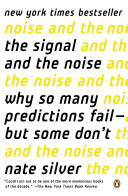The Origin of Chaos Theory
Lorenz and his team were working to develop a weather forecasting program on an early computer known as a Royal McBee LGP-30.21 They thought they were getting somewhere until the computer started spitting out erratic results. They began with what they thought was exactly the same data and ran what they thought was exactly the same code—but the program would forecast clear skies over Kansas in one run, and a thunderstorm in the next.
After spending weeks double-checking their hardware and trying to debug their program, Lorenz and his team eventually discovered that their data wasn’t exactly the same: one of their technicians had truncated it in the third decimal place. Instead of having the barometric pressure in one corner of their grid read 29.5168, for example, it might instead read 29.517. Surely this couldn’t make that much difference?
Lorenz realized that it could. The most basic tenet of chaos theory is that a small change in initial conditions—a butterfly flapping its wings in Brazil—can produce a large and unexpected divergence in outcomes—a tornado in Texas. This does not mean that the behavior of the system is random, as the term “chaos” might seem to imply. Nor is chaos theory some modern recitation of Murphy’s Law (“whatever can go wrong will go wrong”). It just means that certain types of systems are very hard to predict.
Notes:
Weather modeling produced two widely different results when a few thousandths of a decimal point went missing.
Folksonomies: prediction chaos theory
Taxonomies:
/science/weather (0.586509)
/technology and computing/hardware (0.358529)
/finance/personal finance/insurance (0.291170)
Keywords:
chaos theory (0.927579 (negative:-0.636693)), Royal McBee LGP-30.21 (0.760101 (negative:-0.809811)), widely different results (0.745910 (negative:-0.636693)), weather forecasting program (0.729613 (negative:-0.809811)), initial conditions—a butterfly (0.692109 (neutral:0.000000)), decimal point (0.615452 (negative:-0.636693)), erratic results (0.598025 (negative:-0.809811)), decimal place (0.589880 (negative:-0.256166)), Weather modeling (0.584510 (negative:-0.636693)), barometric pressure (0.582483 (negative:-0.450782)), unexpected divergence (0.578587 (neutral:0.000000)), clear skies (0.578417 (neutral:0.000000)), basic tenet (0.571952 (neutral:0.000000)), modern recitation (0.570747 (neutral:0.000000)), Lorenz (0.565937 (negative:-0.568155)), certain types (0.562822 (negative:-0.593000)), outcomes—a tornado (0.562052 (neutral:0.000000)), Murphy’s Law (0.561505 (neutral:0.000000)), small change (0.558593 (neutral:0.000000)), team (0.464257 (negative:-0.809811)), data (0.461668 (neutral:0.000000)), thunderstorm (0.446464 (negative:-0.289671)), thousandths (0.433801 (negative:-0.636693)), difference (0.433444 (negative:-0.437795)), technicians (0.432116 (negative:-0.256166)), Origin (0.431839 (negative:-0.636693)), grid (0.431707 (negative:-0.450782)), Kansas (0.430640 (neutral:0.000000)), run (0.430604 (neutral:0.000000)), hardware (0.430152 (negative:-0.334625))
Entities:
Lorenz:Person (0.949891 (negative:-0.568155)), Royal McBee:City (0.492073 (negative:-0.809811)), Murphy:Person (0.379272 (neutral:0.000000)), Kansas:StateOrCounty (0.369976 (neutral:0.000000)), Texas:StateOrCounty (0.359377 (neutral:0.000000))
Concepts:
Decimal (0.965809): dbpedia | freebase
Forecasting (0.899258): dbpedia | freebase | opencyc
Atmospheric pressure (0.890574): dbpedia | freebase
Chaos theory (0.885895): dbpedia | freebase | opencyc | yago
LGP-30 (0.872738): dbpedia | freebase | yago
Meteorology (0.863004): dbpedia | freebase | opencyc
Weather forecasting (0.846416): dbpedia | freebase
Computer (0.798258): dbpedia | freebase | opencyc






